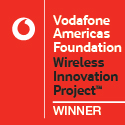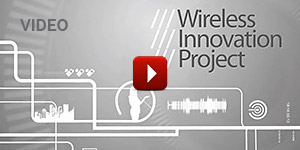CelloPhone
Electrical Engineering Department, UCLA
Dr. Aydogan Ozcan, Dr. Neven Karlovac, Dr. Yvonne Bryson
In resource limited settings, such as in the villages of Africa, there is no infrastructure to conduct even very simple medical tests such as blood counts. To combat various infectious diseases such as malaria and HIV there is an urgent need to be able to analyze bodily fluids such as whole blood samples in a cost-effective and simple way that can even be conducted by minimally trained personnel. For such blood tests to be performed in the field, we need wireless technologies that can capture the micro-scale signatures of various blood cells even at resource poor settings. And cell phones offer a great match for this purpose since: (1) they are already widely used almost everywhere; and (2) they are equipped with advanced technologies that could be tailored towards the needs of such medical tests. Such a wireless health monitoring technology that runs on a regular cell-phone would significantly impact the global fight against infectious diseases in resource poor settings such as in Africa, parts of India, South-East Asia and South America.
The CelloPhone Project aims to develop a transformative solution to these global challenges by providing a revolutionary optical imaging platform that will be used to specifically analyze bodily fluids within a regular cell phone. Through wide-spread use of this innovative technology, the health care services in the developing countries will significantly be improved making a real impact in the life quality and life expectancy of millions.
The core technology of the CelloPhone Project relies on an innovative on-chip platform, developed by Prof. Aydogan Ozcan’s Group at UCLA, which we term LUCAS—Lensfree Ultra-wide field Cell monitoring Array platform that is based on Shadow Imaging. For most bio-medical imaging applications, directly seeing the structure of the object is of paramount importance. This conventional way of thinking has been the driving motivation for the last few decades to build better microscopes with more powerful lenses or other advanced imaging apparatus. However, for imaging and monitoring of discrete particles such as cells or bacteria, there is a much better way of imaging that relies on detection of their shadow signatures. Technically, the shadow of a micro-object can be thought as a hologram that is based on interference of diffracted beams interacting with each cell. Quite contrary to the dark shadows that we are used to seeing in the macro-world (such as our own shadow on the wall), micro-scale shadows (or transmission holograms) contain an extremely rich source of quantified information regarding the spatial features of the micro-object of interest.
By making use of this new way of thinking, unlike conventional lens based imaging approaches, LUCAS does not utilize any lenses, microscope-objectives or other bulk optical components, and it can immediately monitor an ultra-large field of view by detecting the holographic shadow of cells or bacteria of interest on a chip. The holographic diffraction pattern of each cell, when imaged under special conditions, is extremely rich in terms of spatial information related to the state of the cell or bacteria. Through advanced signal processing tools that are running at a central computer station, the unique texture of these cell/bacteria holograms will enable highly specific and accurate medical diagnostics to be performed even in resource poor settings by utilizing the existing wireless networks.
Project Site: http://innovate.ee.ucla.edu

Meet the Winners

From Wired to Wireless
The story behind the Vodafone Wireless Innovation Project winners’ trophy
video




